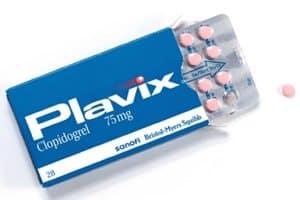Are you interested in finding 'plavix case study'? You can find your answers here.
Plavix: Drugs in the Age of Personal Medicine is A Harvard Business (HBR) Case Study connected Innovation & Entrepreneurship, Fern Fort University provides HBR case study assignment aid for just $11. Our case answer is based connected Case Study Method acting expertise & our global insights.
Table of contents
- Plavix case study in 2021
- Clopidogrel 150 mg loading dose
- Plavix lawsuit update 2020
- Best time to take clopidogrel 75 mg
- Plavix 75 mg twice daily dosing
- Clopidogrel vs aspirin
- Clopidogrel 150 mg daily
- What happens if i miss a dose of plavix
Plavix case study in 2021
 This image illustrates plavix case study.
This image illustrates plavix case study.
Clopidogrel 150 mg loading dose
 This image shows Clopidogrel 150 mg loading dose.
This image shows Clopidogrel 150 mg loading dose.
Plavix lawsuit update 2020
 This image demonstrates Plavix lawsuit update 2020.
This image demonstrates Plavix lawsuit update 2020.
Best time to take clopidogrel 75 mg
 This picture illustrates Best time to take clopidogrel 75 mg.
This picture illustrates Best time to take clopidogrel 75 mg.
Plavix 75 mg twice daily dosing
 This picture shows Plavix 75 mg twice daily dosing.
This picture shows Plavix 75 mg twice daily dosing.
Clopidogrel vs aspirin
 This picture representes Clopidogrel vs aspirin.
This picture representes Clopidogrel vs aspirin.
Clopidogrel 150 mg daily
 This image illustrates Clopidogrel 150 mg daily.
This image illustrates Clopidogrel 150 mg daily.
What happens if i miss a dose of plavix
 This image representes What happens if i miss a dose of plavix.
This image representes What happens if i miss a dose of plavix.
What was the Plavix case about in Hawaii?
Hawaii alleged the companies violated state consumer protection laws by marketing Plavix without disclosing that the drug could have a diminished or no effect for some people, particularly those of East Asian and Pacific Island ancestry. Plavix is prescribed to prevent strokes and heart attacks.
How much did Bristol Myers Squibb pay in Plavix case?
A judge in Hawaii in the United States on Monday ordered Bristol Myers Squibb Co and Sanofi SA to pay more than $834m to the state for failing to warn non-white patients properly of health risks from the companies’ jointly-created blood thinner Plavix.
How is Plavix used to treat heart attacks?
Plavix is prescribed to prevent strokes and heart attacks. The blood thinner needs to be activated by the body’s own enzymes, which can vary genetically. Studies have shown that about 14 percent of Chinese patients are unable to metabolise the drug properly, compared with four percent of Black and two percent of white patients.
Who was the judge in the Plavix case?
Judge Dean Ochiai in Honolulu concluded the companies engaged in unfair and deceptive business practices from 1998 to 2010 by failing to change the drug’s label to warn doctors and patients despite knowing some of the risks.
Last Update: Oct 2021